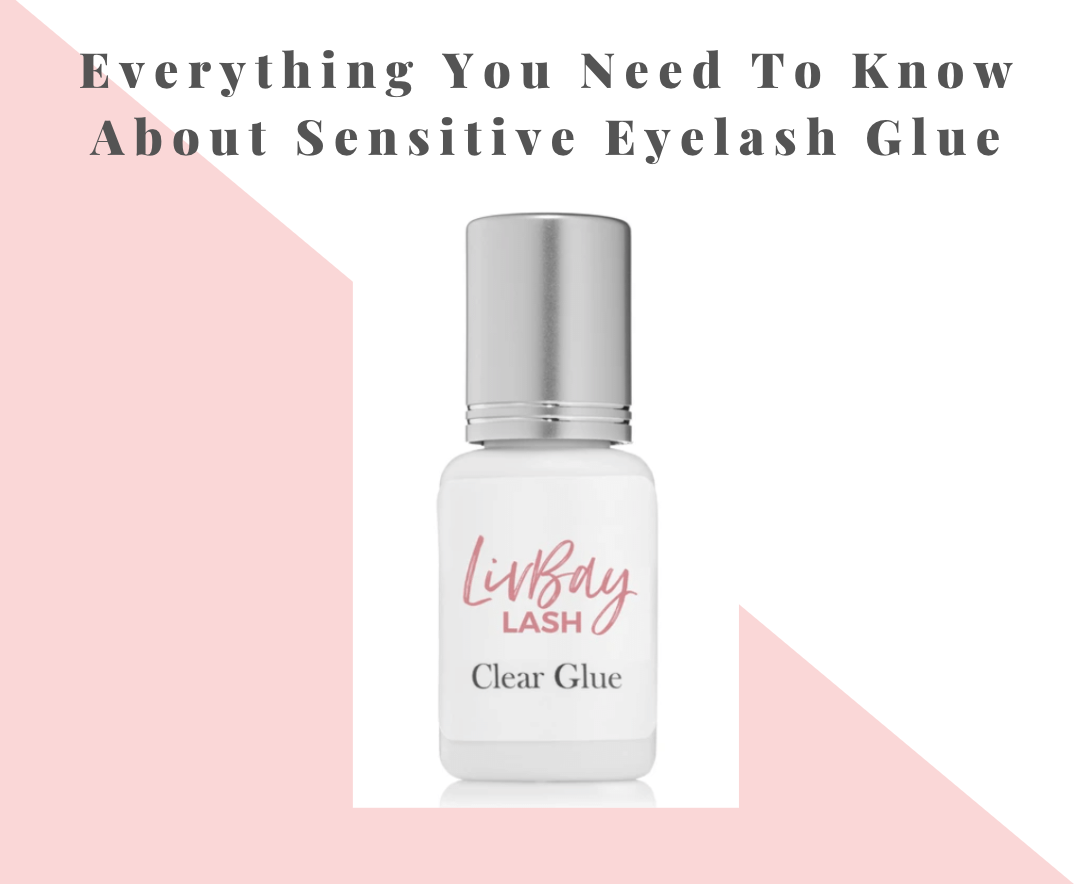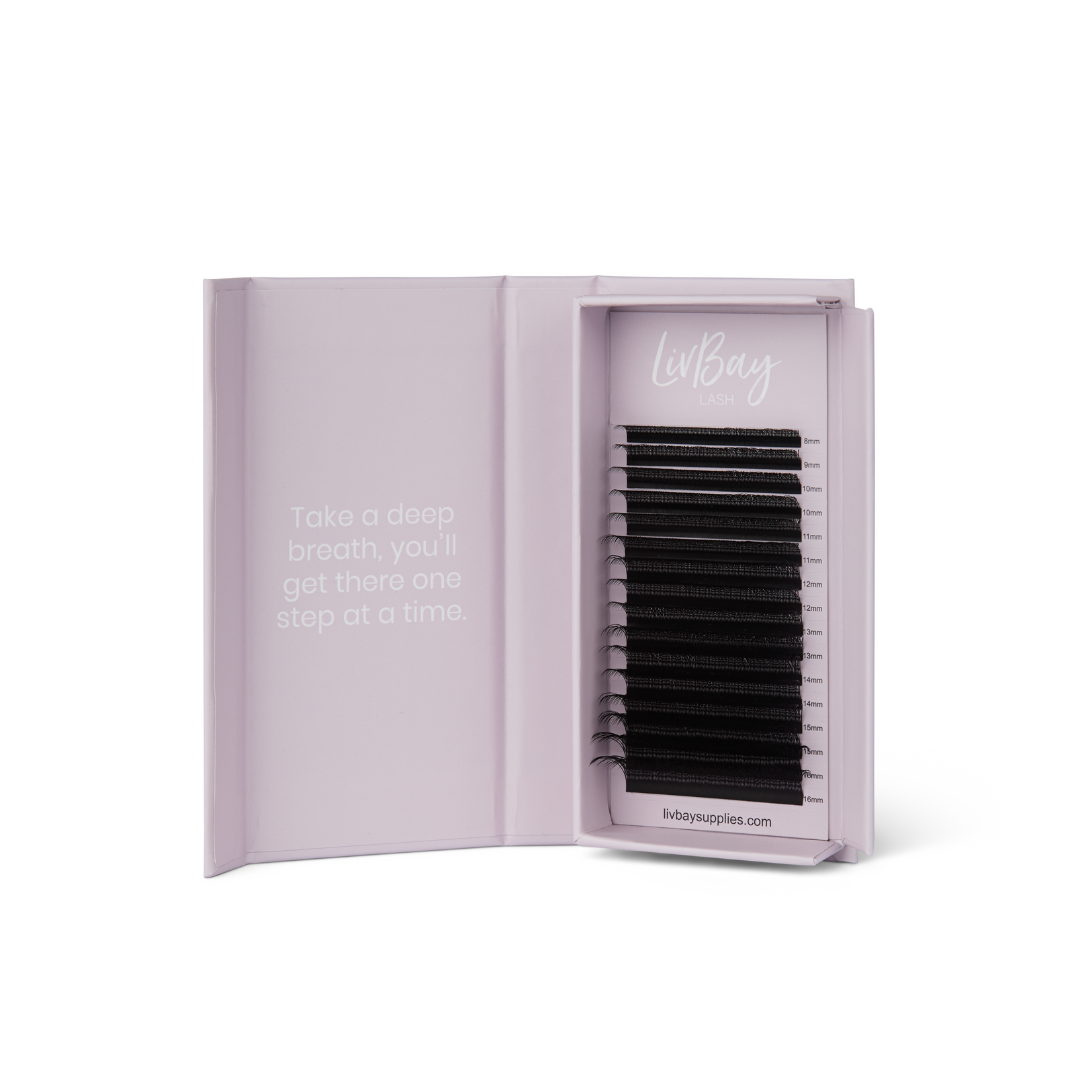
Everything You Need To Know About Sensitive Eyelash Glue
Share
Sensitive eyelash glue is needed sometimes for people with allergic reactions. Who doesn’t want lashes that are long and full of volume? Even if nature didn’t bless you with a fluffy lash line, you can get lash extensions any time and make it happen by using the right type of glue.
However, not everyone can enjoy lashing to the same extent. The lash adhesive that is widely used for attaching fake lashes consists of a variety of chemicals. Because of this, some sensitive clients start to develop irritation, itching, and even full-on allergic reactions. What can you do if your client turns out to be sensitive towards your lash glue? Is there a sensitive eyelash glue for lash extensions? We’re about to answer all your concerns about this matter, so hop on board and keep on reading!
Why Does Eyelash Glue Cause Irritation?
We use medical-grade adhesive to ensure the strong retention of lash extensions. Lash glue consists of many different chemicals. The substance that provides adhesion is called cyanoacrylate, which is included in every single lash adhesive on the market, even in the sensitive eyelash glue. Usually, cyanoacrylates are not strong sensitizers and not many people develop allergies during lashing procedures because of them. If a person is allergic to it, they, unfortunately, can never enjoy the beauty of lash extensions. Well, at least until the worthy substitute appears.
There are two ingredients in the eyelash glue that are responsible for watery eyes and itchy eyelids - carbon black and latex.
Carbon black is a pigment that is added to an adhesive to give it the black color, which makes it blend into the lashes seamlessly. As for the latex, it helps the adhesive to dry faster, therefore, you usually meet this ingredient in the fast-drying lash glue that master lash artists use.

Which Is The Best Sensitive Eyelash Glue?
If your client tells you that she is super sensitive or her eyes start to get irritated in the middle of lashing, there’s time to switch to sensitive eyelash glue. Of course, there’s no definite way to know what ingredient causes the reaction, so you need to have the safest option handy.
-
Clear Glue
- For the clients who are allergic to the pigment that makes adhesive black, using a clear glue is the best option. It does not contain carbon black, and therefore, minimizes the chances of developing irritation and swelling. Note, that clear glue takes longer to dry down (approximately 2-2.5 seconds). This may slow down a professional lash artist who is used to moving at a fast pace. However, if you are at the beginning of your lashing journey, clear adhesive’s long drying time will give you just enough time to work without rushing.

Tip From LivBay Lash - Even though that clear adhesive is considered to be a sensitive eyelash glue for allergic clients, it also works perfectly for colorful eyelash extensions as a basic black adhesive isn’t the optimal choice for bright colors.
-
Latex-Free Glue
- Having a latex-free alternative is very important because unlike other ingredients that are found in lash glue, latex is something that is in many other things around us including clothing, pieces of furniture, accessories, etc. So, if your client has a latex allergy, they are likely to be aware of it by the time they come to you. However, they might not know that lash adhesives contain the substance, so make sure you ask them about the latex allergies before starting to attach lash extensions.
Switching to the latex-free sensitive eyelash glue doesn’t change much to the lashing process. There are adhesives with no latex that provide you with both fast drying time and slow drying time. So, unlike in clear glue’s case, you have the freedom to choose the latex-free adhesive that matches your lashing speed.
Tip From LivBay Lash - Don’t forget to consider environmental factors when choosing a lash glue. Humidity and temperature can interfere with the performance of your adhesive so purchase the one that goes well with your surroundings to ensure the strong retention.
What Are The Drawbacks of Sensitive Eyelash Glue?
Yes, a good sensitive glue can save the day when your client’s eye area starts to feel uncomfortable, however, it comes with some noticeable drawbacks - possible longer drying time and shorter retention. The reason behind this is the fact that sensitive eyelash glue contains fewer fumes, which interferes with the longevity of your client’s lash extensions. For example, if “normal” glue can hold up to 6 weeks, sensitive glue can only ensure 4 weeks of durability (possibly 5 weeks, if your client takes extra special care on her lashes).
So, when you are switching to sensitive adhesive, make sure you tell your client about these drawbacks. Explain to them that the procedure is likely to go longer than expected because the glue takes longer to cure. And most importantly, mention that the lash extensions aren’t going to last as long as they would if you could have used a usual adhesive with harsher ingredients.
Tip From LivBay Lash - If your sensitive lash glue takes too long to dry, try using a nano mister to splash distilled water on your client’s lashes. This will make the adhesive cure faster and shorten the lashing process drastically.

What Do Lash Adhesive Allergies Look Like?
In some rare cases, switching to sensitive eyelash glue is not an option. There’s a difference between irritation and actual allergic reaction that may lead to serious problems. So, if your client is having an allergic reaction, you should abort the mission - stop attaching lashes and remove the ones that you might have already applied.
How do you know that your client is having a full-on allergic reaction? If the visible swelling, redness, unbearable itching, or rash occurs on BOTH eyes, this indicates that your client is having an allergic reaction. Note, that even your long time client can start showing these symptoms suddenly.
Once the allergic reaction pops up, it is important to move fast and start removing the extensions using lash glue remover. Don’t forget to check your client’s eyelids for any glue drops that might have gotten there by mistake and caused the allergies initially. In our experience, clients often ask to keep on lashing even after they develop such symptoms. However, you should explain to them that if you do it, they’re likely to have more serious issues.

How To Deal With Irritated Eyes?
If you’re facing mild irritation rather than an allergic reaction, you can keep on lashing with sensitive eyelash glue. However, you also need to nourish your client’s eyes. We find nano mister to be the best companion in such situations. This handy little device soothes the eyes, the adhesive cures faster, and itching sensation goes away. Many lash artists underestimate the importance of misting lashes a few times during the lash extension procedure. It actually wavers the need for your client to stay away from water for 24 hours and lets them wash their face soon after they step out of the salon. Washing lash extensions with a proper cleanser can make all irritation symptoms disappear. So to cut the long story short, nano mister is one of the most valuable investments you can make as a lash artist!

Dealing With Sensitive Clients: Final Words
No matter how experienced you are, believe us, you’ll never get used to your client having an allergic reaction or irritation right under your tweezers. However, you need to learn how to keep calm and communicate with your sensitive client in a way that doesn’t freak them out. Always have a trusty sensitive eyelash glue handy to use it in case anything goes wrong. Oh, and make sure you find a good one, because when it comes to lash extensions adhesives, you definitely don’t want to be greedy.


1 comment
I need to order glue for sensitive eyes please for individual eye lashes.